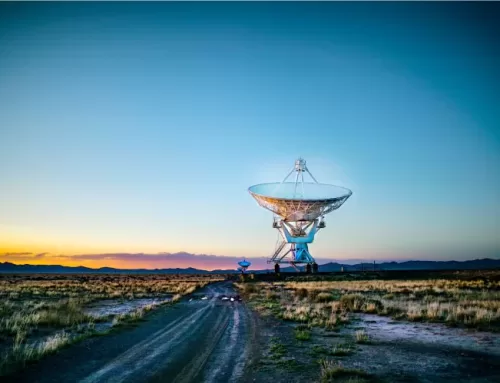Laura, Mike, and I began researching students’ future playing needs with a major assumption: online play is growing at the expense of “in real life” play. Everything we read bore this out, and this is clearly the expected future. So much of the “magic circle” of play for the up-and-coming generation is moving online, even for very small children.
But we started looking into some emerging technologies like augmented reality and wearable user interfaces — and we found some strange-sounding ones like “haptics” and “piezoelectrics” — and a potential alternative emerged. What if play started to move back offline? What if play started to bridge the real and virtual worlds?
Breathless speculation about driverless cars and an internet of things got us thinking about how the division between “meat space” and “cyber space” might dissolve as these visions become reality. How would game designers and cultivators of play experiences make use of the sensor and data infrastructure that would certainly be needed to make cars drive themselves and add online intelligence to everyday products?
And so, “It’s All Play” — the alternative future we created for Student Needs 2025+ — was born. Online and offline worlds will be an integrated playground, and everything — even the stuff of everyday life — can be gamified.
What happens when everything can be made into a plaything? What happens when training, employment, and even driving around town, can be gamified? What happens then to the “magic circle” that, according to play theorists, separates “play time” from “non-play” time? If everything becomes play, is anything play? Could the ultimate triumph of play over reality be its demise as well?
The fact that this alternative sparks such foundational questions about the nature of play is what makes it so useful for the Student Needs 2025 project. Of course this alternative assumes the accelerated commercialization of technologies that are now just in prototype phases and the unlikely cooperation of diverse stakeholders to enable this seamless integration. Nonetheless, whether the scenario is likely to occur is not the point. The point is to surface fundamental attitudes toward the role of play in the life of a student in 2025. Is play a crucial restorative oasis for the soul? A “magic circle” one enters to recharge and rejuvenate one’s creativity and receptiveness to learning? Or is play just another tool to be used in pursuit of more important things in life, a servant of productivity? How you answer that question will determine how you see the role of Play in post-secondary education in 2025 and beyond.
Student Needs 2025+ Guest Post: "It's All Play" by Cody Clark
In the coming weeks, the Houston Foresight blog will feature guest posts from members of the Student Needs 2025+ teams to share insights from their research and the implications of what they found.
Cody Clark is the Playing Team Lead and has a Master’s degree in Studies of the Future from University of Houston-Clear Lake. Laura Schlehuber, Playing Team Analyst, and Mike Ivicak, Playing Team Research Assistant, are current students in the UH Foresight program.

